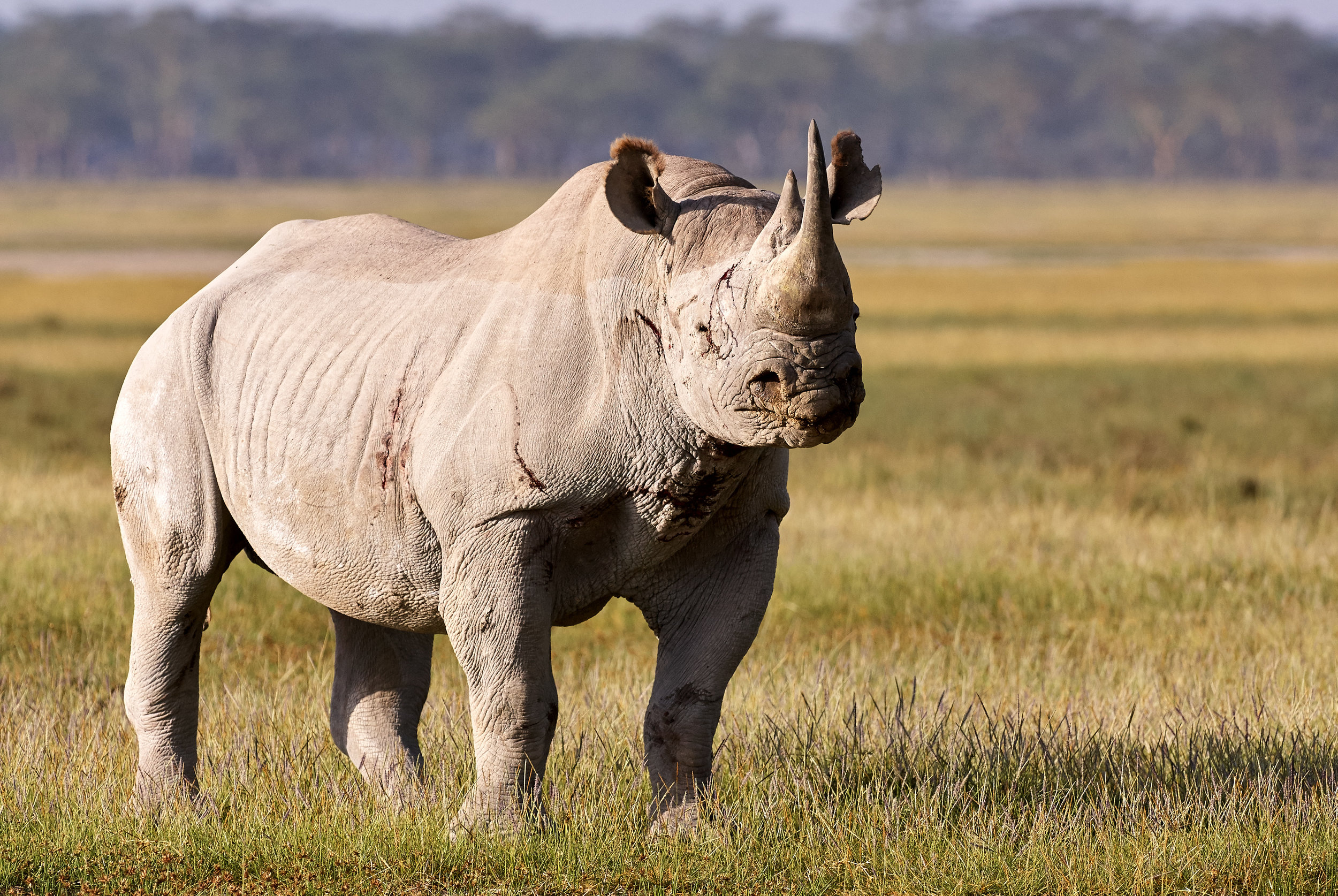Black Rhino
"Black Rhino" by Joe Weatherly (oil on canvas)
“What made me want to paint the critically endangered black rhinoceros is the shear mass and power that they exude. The broad sculptural planes and features of these marvelous creatures are a dream for a painter of form. ”
Your purchase is helping Expedition Art and Saving Species purchase land in Sumatra! Learn more about the project.
Habitat
The black rhino lives in South Africa, Namibia, Zimbabwe and Kenya. It inhabits a variety of habitats, ranging from the deserts to grasslands, savannas and tropical bush lands.
Family Life
Except for females and their offspring, rhinos are solitary. Calves stay with their mothers until they are around three years old. Black rhinos stay cool in the heat of the African sun by taking cover in the shade. They roll in the mud to coat their skin, a behavior called “wallowing”. They do this as a form of natural insect repellent and sunscreen. Rhinos are able to find one another through their keen sense of smell. Though rhinos don’t often hang out with each other, they do hang out with birds. The Oxpecker will sit on a rhino’s back and eat the bugs that crawl on the rhino’s skin. When danger approaches, the Oxpecker will call out, warning the rhino. The black rhino’s skin harbors many external parasites, which are eaten by the Oxpeckers and Egrets that live with the rhino. They have a highly symbiotic relationship.
Lifespan
Black rhinos can live to be 25 – 40 years; in captivity, they can live a little longer, usually to about 45 years old.
Hunting Habits/Diet
Black Rhinos are herbivores that eats leafy plants, branches, shoots, thorny wood bushes and fruit. They typically feed at night and during the gloaming hours of dawn and dusk.
Population
In 1993, only 2,475 black rhinos were recorded. Thanks to successful conservation and anti-poaching efforts, the total number of black rhinos has grown to over 6,000*.
Fun Fact
The black rhino has two horns which are made of keratin. In spite of its name, the black rhino is actually grey. When rhinos are happy, they make a loud “mmwonk” sound with their mouths.
Why are they Endangered?
Today, black rhinos remain endangered because of rising demand for rhino horn, which has caused poaching to reach record levels. The increase is driven by a growing demand from some Asian consumers, particularly in Vietnam, for folk remedies containing rhino horn. In 2014, a total of 1,215 rhinos were poached in South Africa – a 21 percent increase from the previous year.
Status
Critically Endangered
Sources
http://support.iucnredlist.org/species/black-rhinoceros
* https://worldanimalfoundation.org/advocate/poaching-statistics/


